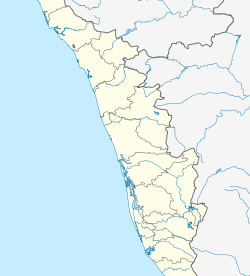In the district, horticulture crops occupy a relatively high proportion of gross cropped area, raising the economic viability of solar pumps here. The number of medium and long-term institutional loans disbursed in the district is comparatively large, suggesting the availability of credit amongst farmers for potential investments. There is a comparatively low level of farm mechanization, possibly due to low awareness or poor outlook towards progressive technologies amongst the farmers here. The district has a relatively high proportion of small and marginal farmers. The district appears in the group of districts, which show (very) low vulnerability towards climate change, as per an index constructed by CRIDA.
Deployment Approaches
| Approaches | Feasibility |
|---|---|
| Individually owned off-grid solar pumps | Not Suitable |
| Solarisation of feeders | Not Suitable |
| Solar based water as a service | Limited SUitability |
| Promote 1 HP and sub-HP pumps | Limited Suitability |
| Solarisation of individual grid-connected pumps | Not suitable |
Individually owned off-grid solar pumps
Not Suitable
The district has a relatively high disbursement of institutional credit, but ground water availability is below the safe limit, the concentration of diesel pump users is comparatively low, and crop revenue per holding is also low, making it extremely difficult to promote the private ownership of solar pumps here.
| Parameter | Value | Percentile |
|---|---|---|
| Number of cultivators reporting use of diesel pumps | 1,843 | 23 |
| Water Availability Index | 0.63 | 50 |
| Crop revenue per holding (INR) | 65,498 | 43 |
| Medium and long term institutional credit disbursed in a year (in INR Crore) | 361.3 | 89 |
Solarisation of feeders
Not Suitable
The district has a relatively high penetration of electric pumps. But, a rather low cost of power supply for the respective DISCOM and a comparatively low extent of feeder segregation make it very difficult to solarise the feeders here.
| Parameter | Value | Percentile |
|---|---|---|
| Actual cost of power supply (INR/kWh) | 5.43 | 26 |
| Extent of feeder segregation | ||
| Proportion of cultivators reporting use of electric pumps | 20% | 69 |
Solar based water as a service
Limited SUitability
The district has a relatively high concentration of small and marginal farmers, and a rather high proportion of unirrigated area, but groundwater availability is below the safe limit. Water conservation and efficient irrigation practices (such as drip irrigation) should be considered while promoting solar-based water as a service, in order to improve the economic viability of the model, increase water availability, and decrease the effective cost of irrigation in the district.
| Parameter | Value | Percentile |
|---|---|---|
| Water Availability Index | 0.63 | 50 |
| Proportion of small and marginal cultivators | 98% | 93 |
| Unirrigated net sown area as a share of total net sown area | 55% | 46 |
Promote 1 HP and sub-HP pumps
Limited Suitability
The district has a relatively high proportion of gross cropped area under horticulture crops, a high concentration of marginal farmers and a comparatively high disbursement of institutional credit to marginal farmers, but groundwater availability is below the safe limit. Water conservation and efficient irrigation practices (such as drip irrigation) should be promoted to improve the viability of small capacity pumps.
| Parameter | Value | Percentile |
|---|---|---|
| Area under horticulture crops as a share of gross cropped area | 70% | 97 |
| Water Availability Index | 0.63 | 50 |
| Proportion of marginal cultivators | 92% | 94 |
| Medium and long term institutional credit disbursed in a year (in INR Crore) | 361.3 | 89 |
Solarisation of individual grid-connected pumps
Not suitable
The district has a relatively high penetration of electric pumps. But, a relatively low agriculture power subsidy, groundwater level below safe limits and a comparatively low extent of feeder segregation make it very difficult to solarise individual grid-connected pumps here.
| Parameter | Value | Percentile |
|---|---|---|
| Water Availability Index | 0.63 | 50 |
| Actual cost of power supply (INR/kWh) | 5.43 | 26 |
| Extent of feeder segregation |
Leveraging Solar Pumps to Promote Policy Objectives
If you are deploying solar pumps in this district then you can further these policy objectives.
Har Khet ko Pani
A relatively high proportion of the net sown area in the district is unirrigated, indicating high irrigation demand. Solar pumps can help improve access to underground irrigation as part of Har Khet ko Pani.
| Parameter | Value | Percentile |
|---|---|---|
| Unirrigated net sown area as a share of total net sown area | 55% | 46 |
Doubling Farmers’ Income – Crop Intensity
A relatively high proportion of the district’s net sown area is unirrigated. Lack of access to irrigation is one of the major barriers to growing crops beyond two conventional seasons, rabi and kharif. Ensuring irrigation access through solar power will help improve cropping intensity and move towards the aim of doubling farmers’ income by 2022.
| Parameter | Value | Percentile |
|---|---|---|
| Unirrigated net sown area as a share of total net sown area | 55% | 46 |
Per Drop More Crop
In the district, crops suitable for drip and sprinkler irrigation occupy a relatively high proportion of gross cropped area, making it easy to adopt such high precision irrigation methods. Solar pumps, along with other efficient and precise water application devices, could be deployed under Per Drop More Crop to promote efficient irrigation.
| Parameter | Value | Percentile |
|---|---|---|
| Area under crops suitable for drip and sprinkler irrigation as a share of total cropped area | 91% | 99 |


